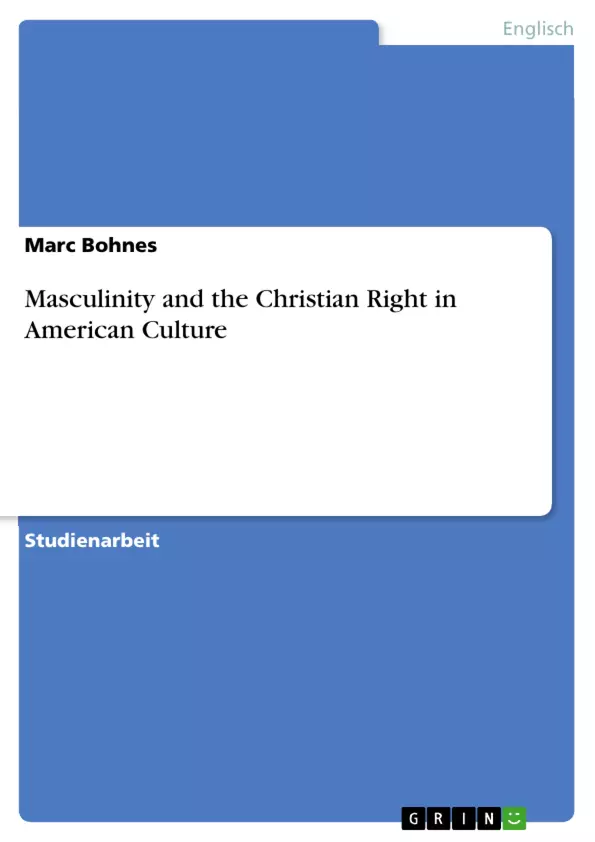Ever since the United States of America has declared its independence, religion has played a pivotal role in shaping the culture and society of this country. There might, arguably, be no other (Western) country in which people’s societal stance has been influenced as strongly by religion as in the U.S. The Judeo-Christian belief has entirely met American culture, and American culture has met the Judeo-Christian belief. However, culture is, as we know, not static, but is always in a state of flux, it is always in a state of transition and thus transformation. As to this trans-categorical concept, Alan Wolfe notes the following:
Always in a state of transition, faith in the United States, especially in the last half century [...], has been further transformed with dazzling speed 1.
[...]
1 Wolfe, Alan 14, p. 2
Contents
1 U.S. American Faith and the Christian Right
2 Man, Christianity, and the Weak - Homosexuality
2.1 The Scriptures - Abomination and Mortal Sins.
3 Man, Christianity, and the Weak - Women
4 Final Thoughts - A Critical Inquiry of Religious Dogmas
References
- Arbeit zitieren
- B.A. Marc Bohnes (Autor:in), 2010, Masculinity and the Christian Right in American Culture, München, GRIN Verlag, https://www.grin.com/document/199172



